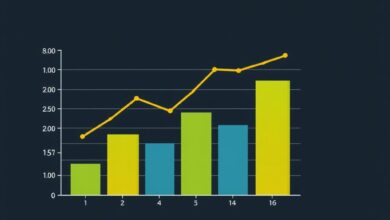What are index funds and how to invest in them

Investing in the S&P 500 offers a straightforward pathway to achieve robust diversification at a low-cost entry point. Allocating funds to this index allows individuals to tap into the performance of 500 of America’s largest companies, spreading risk effectively across various sectors.
While traditional active management can incur hefty fees, turning to passive alternatives minimizes expenses significantly. This approach not only preserves more capital for growth but also enhances long-term returns by mitigating the drag caused by high management costs.
For those looking to build a balanced portfolio, incorporating low-cost options linked to the S&P 500 is a strategic move. It empowers investors to participate in market gains while maintaining exposure across different industries, thus reducing volatility and enhancing overall financial stability.
What Are Index Funds?
Investing in the S&P 500 through a low-cost vehicle is a strategic approach to wealth accumulation. These financial products aim to replicate the performance of a specific market index, allowing investors to gain broad exposure with minimal effort.
Key features include:
- Cost Efficiency: Management fees are significantly lower compared to actively managed portfolios, enhancing overall returns.
- Diversification: By holding a wide array of stocks within an index, risk is distributed across multiple sectors, reducing volatility.
- Performance Tracking: Typically, they match or slightly underperform their benchmarks due to expenses, making them reliable long-term options.
For those new to investing, consider allocating a portion of your portfolio into these vehicles. Regular contributions can amplify growth over time, especially when reinvesting dividends. This method aligns with the principle of index investing–building wealth gradually without requiring active management expertise.
Moreover, understanding the mechanics behind these products empowers investors to make informed decisions. Monitor expense ratios and select funds that closely track desired indices for optimal results. Investing in the S&P 500 via such means offers a straightforward pathway toward capital growth.
Benefits of Index Investing
Investing in the S&P 500 offers a straightforward approach to wealth accumulation. By allocating assets across a wide range of companies, you benefit from diversification, which mitigates risks associated with individual stocks. This broad exposure not only stabilizes returns but also aligns your portfolio with overall market performance.
Low fees are a significant advantage. Many funds linked to indices charge minimal expense ratios compared to actively managed alternatives. This cost-effectiveness ensures that more of your money remains invested, compounding over time for greater gains.
Performance consistency is another key benefit. Historically, index investing has outperformed most actively managed portfolios over extended periods. Data shows that many fund managers fail to beat their benchmarks after fees are accounted for, making passive strategies appealing for long-term growth.
Simplicity and transparency enhance the appeal of this method. Investors can easily understand what they own and how their portfolio is structured, reducing confusion and aiding informed decision-making.
Tax efficiency stands out as well; lower turnover rates lead to fewer taxable events, allowing your investments to grow without the drag of capital gains taxes until withdrawal.
Incorporating index investing into your financial plan can be an intelligent choice for those seeking steady growth with manageable risk levels while enjoying the peace of mind that comes from a well-diversified asset allocation.
How to Choose an Index Fund
Focus on the expense ratio; lower fees mean more of your money remains invested. Seek options with an expense ratio under 0.1% for optimal growth potential.
Evaluate tracking error, which measures how closely a fund follows its benchmark, such as the S&P 500. A smaller tracking error indicates better performance alignment with the index.
Consider fund size and liquidity. Larger funds tend to have better trading volume, reducing costs associated with buying and selling shares.
Examine diversification within the portfolio. Ensure the fund provides exposure to a broad range of sectors and companies, thereby minimizing risks associated with individual stocks.
Check historical performance but remember that past results don’t guarantee future returns. Compare annualized returns against benchmarks over multiple years to gauge effectiveness.
Review tax efficiency, especially if investing in a taxable account. Look for funds that minimize capital gains distributions to reduce tax burdens.
Finally, assess the reputation of the managing firm. Established companies typically offer more reliability and transparency in their operations.
Diversification With Index Funds
To achieve effective diversification, allocate a significant portion of your portfolio to an S&P 500 tracker. This index represents the performance of 500 large-cap U.S. companies, providing broad market exposure.
Consider diversifying further by including international indices alongside domestic ones. For instance, adding emerging markets or developed international markets can enhance potential returns while distributing risk across global economies.
Diversifying with fixed income options, like bond indices, can stabilize your portfolio during volatile stock market periods. Balance equity and bond allocation based on your risk tolerance to optimize long-term growth while mitigating downside risks.
A systematic approach to rebalancing your holdings every year ensures that you maintain your desired asset mix. Monitor performance and adjust as necessary to stay aligned with your financial objectives.
This method not only minimizes individual security risk but also capitalizes on market trends across various sectors and regions. A diversified portfolio creates a resilient investment strategy capable of weathering different economic conditions.
Common Investment Errors
Avoid timing the market. Many investors mistakenly believe they can predict market movements, leading to buying high and selling low. Instead, consider a consistent investment approach over time, allowing for dollar-cost averaging.
Don’t chase performance. Investing in assets solely based on past success can lead to poor decision-making. Focus on long-term goals rather than short-term gains, particularly with low-cost options that promote sustainable growth.
Neglecting diversification is another frequent misstep. Concentrating investments in a limited number of sectors increases risk. Utilize a broad array of asset classes to mitigate potential losses and enhance overall stability.
Ignoring fees can erode returns significantly. Seek out low-expense alternatives; even small differences in costs can compound over time, impacting your portfolio’s growth trajectory.
Emotional reactions to market fluctuations often result in impulsive choices. Maintain discipline by adhering to a well-structured plan that aligns with your financial objectives, steering clear of panic-driven decisions during downturns.
Failing to regularly review your portfolio may leave you unprepared for changes in market conditions or personal circumstances. Schedule periodic assessments to ensure alignment with evolving goals and risk tolerance.







